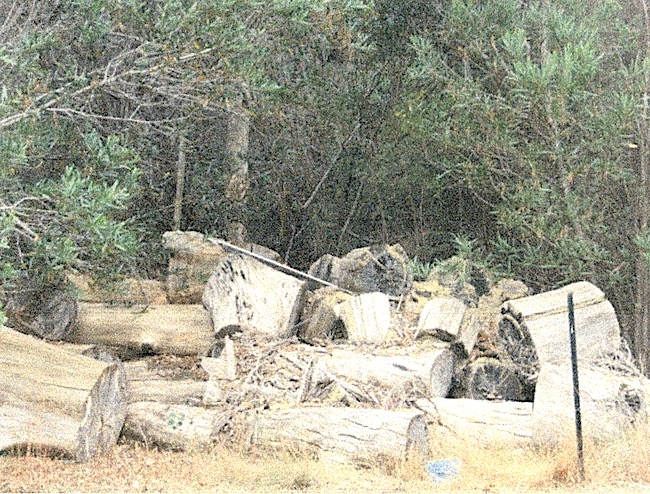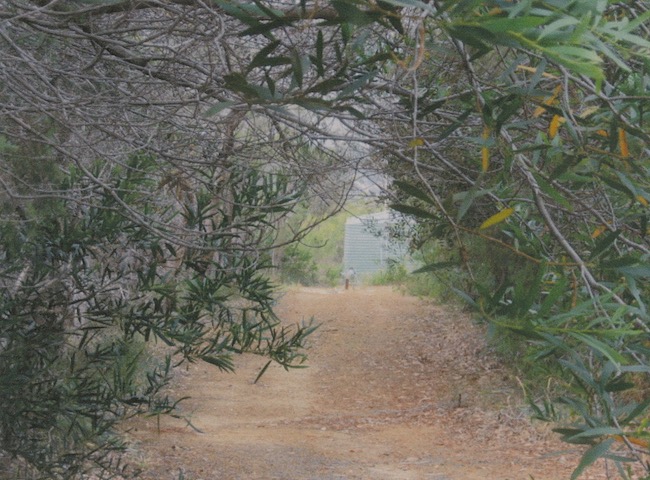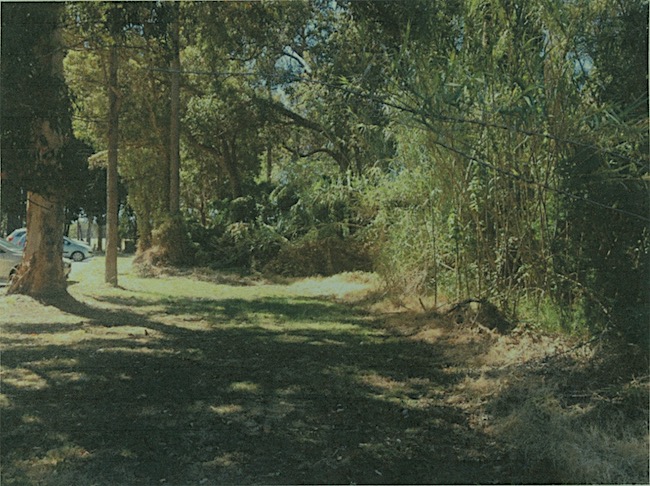A Case Study in Protection of Rural Buildings From Bushfire – Yarloop School
The Yarloop primary school is situated in a dangerous place from the viewpoint of bushfires. It has tall trees close to the buildings and the whole site has bush around the edge (see photo below)
About a year before the Yarloop bushfire disaster, the Harvey Shire Chief Fire Control Officer, Phil Penny, carried out a detailed inspection of the site and discovered that the school was in a very dangerous situation, with :
* heavy fuels close to buildings, about 7tonnes/hectare, which is sufficient to generate a crown fire in the trees around the school,
* gutters clogged with leaves,
* an evaporative airconditioner no longer used but providing an entry point for windblown embers,
* heavy fuel loads in the surrounding bush, including patches of tea tree (which flares in a fire)
* heaps of rubbish, including piles of logs,
* overgrown pathways,
* heavy fuels adjacent to the carpark, which would present a danger to vehicles that might be used in an evacuation.
* lack of effective firebreaks.
Any building in areas where there are trees nearby needs constant maintenance to ensure that gutters are kept clean of leaves. As native trees shed leaves all through summer, gutters usually need to be cleaned about every month to remove this source of fire damage. Evaporative airconditioners are well known to provide entry points for burning embers. Ono-functioning units should be removed entirely and functional units must be provided with suitable screens to prevent entry of embers.
Here are examples of some of the fire hazards around the school.
Heavy litter and scrub growth. In addition to generating showers of burning embers, the intense fire here would cause major damage to the trees in the area.
Piles of dry logs that would burn fiercely.
Overgrown walk paths which would make evacuation of students very dangerous, if not impossible if the area were on fire during a school day.
More heavy fuels.
Mr Penny made several recommendations :
- Install and maintain a firebreak around the perimeter of the property with a minimum width of 3m and a height clearance of 4m.
- Remove the heavy fuel from the carpark area and other places across the site.
- Prune trees with low hanging branches to a minimum height of 3m to prevent a ground fire moving into the crowns.
- Upgrade evaporative airconditioners to prevent ingress of burning embers.
- Fit gutter guards to stop buildup of trash in gutters.
A local group attended to all these points before the bushfire and as a result the school survived the disaster when surrounding buildings were destroyed.
This is a good example of the effectiveness of preventive maintenance in reducing the risk of damage from a bushfire. This is the approach that needs to be followed in all rural areas with any buildings.




